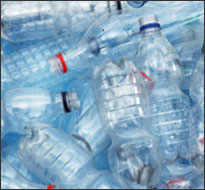Plastic trash is a potential — and plentiful — fuel source, but up to the present many regions of the United States have been reluctant to adopt waste-to-energy technologies. Among the reasons are the availability of relatively cheap land for trash disposal, recyclers who viewed such programs as potential threats, and resistance by local homeowners.
A 2011 study by Columbia University’s Earth Engineering Center for the American Chemistry Council, “Energy and Economic Value of Non-recycled Plastics (NRP) and Municipal Solid Wastes (MSW) that are Currently Landfilled in the Fifty States” (PDF), attempts to calculate the energy contained in discarded materials and its economic value. In their study, the researchers first calculate the amount of plastic waste in the United States in 2008 based on EPA data and the center’s own survey, then use this information to apportion the amount of waste and lost “energy value” per state.
Key study findings include:
- Overall U.S. post-consumer plastic waste for 2008 was estimated at 33.6 million tons; 2.2 million tons (6.5%) were recycled and 2.6 million tons (7.7%) were burned for energy; 28.9 million tons, or 85.5%, were discarded in landfills.
- The United States currently has the capacity to convert just 10% of the postrecycled municipal solid wastes (27 million tons) to energy.
- Connecticut, Massachusetts, Hawaii, Virginia and Minnesota were rated the best at sustainable plastic waste management, measured by utilization of post-consumer plastic and tons of waste in landfills. Alaska, New Mexico, Montana, Oklahoma and Mississippi were rated the worst.
- The potential energy contained in the 28.9 tons of post-consumer plastics deposited in landfills in 2008 equals the amount of BTUs in 36.7 million tons of coal, 139 million barrels of oil, or 783 billion cubic feet of natural gas.
- If all the discarded plastic currently landfilled were separated and recycled, they would produce an estimated 87 million barrels of oil per year (3.6 billion gallons). This is enough to run six million cars for one year or generate 52 million MWh of electricity, supplying 5.2 million households.”
- Replacing 25% of the current U.S. landfills with new waste-to-energy capacity would result in the annual production of about 41 million MWh of electricity, enough for 4.1 million households.
The researchers recommend upgrading existing waste-to-energy plants to handle more plastic waste materials. This will result in additional energy recovery as well as a reduction of the greenhouse gas emissions associated with landfills.
Tags: technology, greenhouse gases, recycling


Expert Commentary